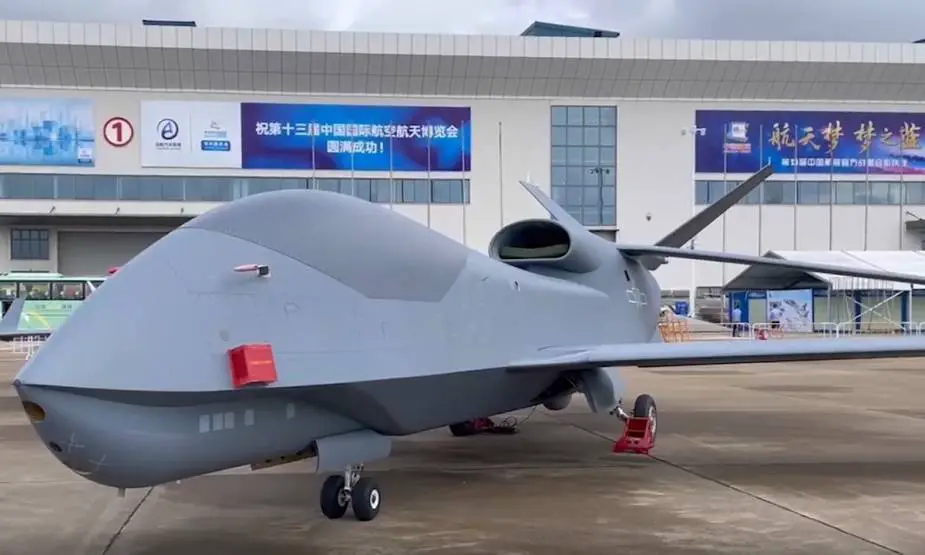The Chinese People's Liberation Army (PLA) Air Force will for the first time display the WZ-7 high-altitude reconnaissance drone at the Airshow China 2021, to be held in Zhuhai, South China's Guangdong Province, from September 28 to October 3, a spokesperson at the PLA Air Force announced on September 24. Liu Xuanzun reports in Global Times.
Follow Air Recognition on Google News at this link

The Chinese Air Force will display for the first time the WZ-7 high-altitude reconnaissance drone at the Airshow China 2021 in Zhuhai, South China’s Guangdong Province, from September 28 to October 3. (Picture source: screenshot from China Central Television via Global Times).
The Guizhou WZ-7 Soar Dragon is an unmanned aerial vehicle of the High-Altitude Long Endurance (HALE) type, featuring an unusual joined, tandem wing plan. In 2011, it was being developed for reconnaissance and possible anti-shipping missions.
The Soar Dragon, designed by the Chengdu Aircraft Industry Group and produced by the Guizhou Aircraft Industry Corporation for service with the People's Liberation Army Air Force, was originally displayed as a model at the Zhuhai Air Show in 2006. Optimized for long-endurance missions at high altitudes, the drone features an unusual tandem, joined wing platform. Except for the wing and the configuration of vertical stabilizers, the Soar Dragon is similar in appearance and mission to the Northrop Grumman RQ-4 Global Hawk operated by the U.S. Air Force.
Large by the standards of UAVs, the Soar Dragon's joined wing allows for a more rigid, less flexible wing than other configurations, with benefits said to include an increased lift-to-drag ratio and less complex flight controls than a HALE UAV with a conventional wing would require. The aircraft is powered by a Guizhou WP-13 turbojet engine, a copy of the Soviet Tumansky R-13; it is anticipated that a newer, improved engine, is or will be installed in production aircraft.
In service with the PLAAF, the primary mission of the Soar Dragon is aerial reconnaissance, but the aircraft can also be fitted with sensors suitable for designating naval vessels for targeting by anti-ship ballistic missiles and cruise missiles.
Since 2018, seven Soar Dragons and supporting infrastructure have been spotted at three bases: three each at Shigatse Airbase in the Tibet Autonomous Region and Lingshui Air Base on Hainan Island (near the South China Sea), and two at Yishuntun Airbase. On July 24, 2019, a Soar Dragon followed an American Ticonderoga-class cruiser, the USS Antietam as it transited the Taiwan Strait, marking its first operational use. As of 2019, the Soar Dragon was operated from three strategic sites: an airbase in Jilin province, Yishitung near Tibet, and Lingshui on Hainan Island.
















